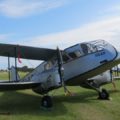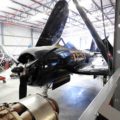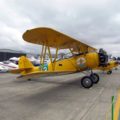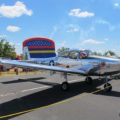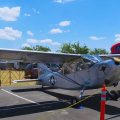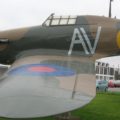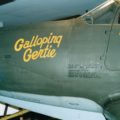
LVG C.VI | |
|---|---|
| Riik | Saksamaa |
| Rolli | Luurelennukid |
| Esimene lend | 1917 |
| Ehitatud | 1100+ |
2007 LVG C.VI oli Saksa kaheistmeline luure- ja suurtükiväe täpilennuk, mida kasutati Esimese maailmasõja ajal.
Allikas: LVG C.VI Vikipeedias
| LVG C.VI Walk Around | |
|---|---|
| Fotograaf | Unknow |
| Lokaliseerimine | Teadmata |
| Fotod | 43 |
Vaata ka:
tekst LVG C.VI was a two-seat reconnaissance and artillery spotting aircraft that was developed and produced by the German company Luft-Verkehrs-Gesellschaft (LVG) during World War I. It was based on the previous LVG C.V model, but had a smaller and lighter design with better aerodynamics. The LVG C.VI had a wooden and metal biplane structure with a semi-monocoque fuselage covered with plywood. It was powered by a single Benz Bz.IV engine that drove a two-blade wooden propeller. The aircraft had a fixed landing gear with a rear skid and a water radiator in the upper wing. The crew consisted of a pilot and an observer, who had access to a radio transmitter, parachutes and heated flying suits. The LVG C.VI was armed with one fixed and one movable machine gun and could carry up to 90 kg of bombs.
LVG C.VI alustas teenistust 1918. aastal ja seda kasutas Saksa Luftstreitkräfte peamiselt läänerindel tihedateks luure- ja vaatlusmissioonideks. Seda kasutasid pärast sõda ka teised riigid, näiteks Poola, Soome, Leedu, Tšehhoslovakkia, Šveits ja Nõukogude Liit. Osa lennukeid muudeti Raab-Katzensteini poolt reisilennukiteks kui LVG P.I, P.II ja RK-8 Marabu. LVG C.VI oli üks viimaseid Saksa kahekohalisi lennukeid, mida sõja ajal massiliselt toodeti, ehitades umbes 1,100 ühikut. Tänapäeval on ainult kolm säilinud LVG C.VI-d, mida eksponeeritakse Inglismaa, Belgia ja Prantsusmaa muuseumides.
Views : 1367



